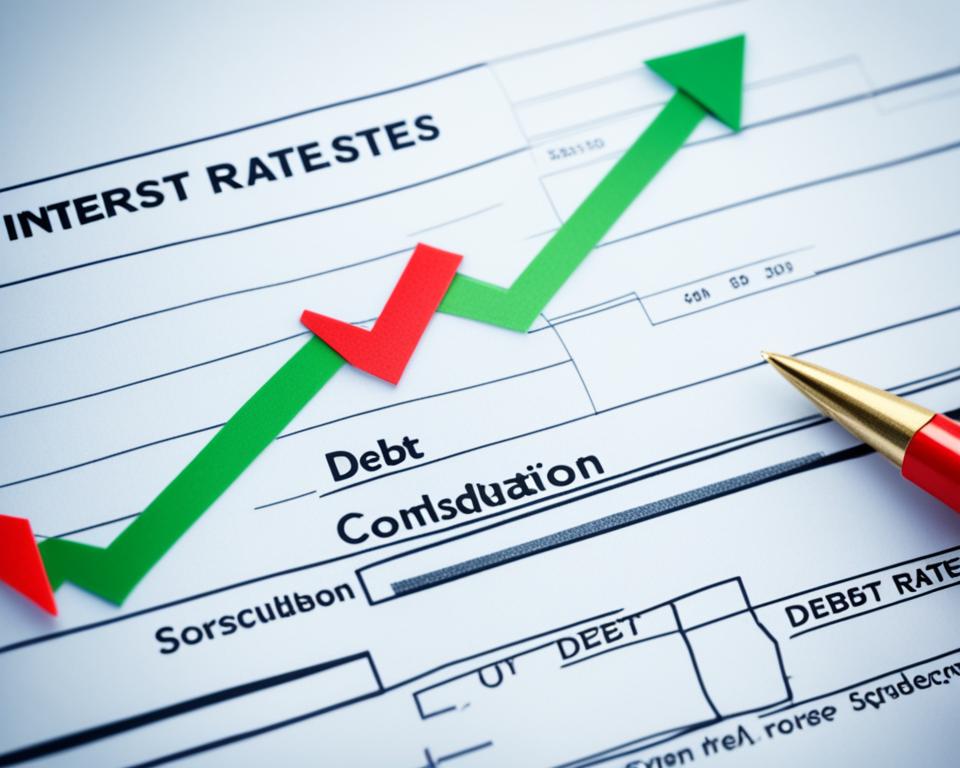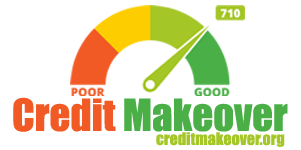When they find themselves juggling multiple loans, many Americans consider debt consolidation as a beacon of hope for regaining control over their financial life. However, the path to simplifying one’s debt situation isn’t always as clear-cut as it seems. While consolidating various debts into one manageable payment can indeed pave the way for financial relief, the onset of unexpected debt consolidation expenses often catches borrowers off guard.
One might think that debt consolidation pricing is straightforward, including just the quoted interest rates and repayment terms. Yet, potential borrowers must be wary of the debt consolidation hidden costs that can creep up. From origination fees that carve out a slice of the loan amount to subtle balance transfer charges that can add up, the reality is that such expenses can diminish the savings one hopes to achieve. It’s imperative to shine a light on these hidden fees to fully grasp the cost-benefit panorama of debt consolidation.
Understanding these nuances, Americans can ensure that debt consolidation serves as a helpful tool, not a financial pitfall. By accounting for every relevant cost, individuals tailor their debt management strategies to optimize their journey to financial freedom.
Key Takeaways
- Debt consolidation can streamline repayment but may include hidden fees.
- Uncovering all associated costs is crucial for a true assessment of debt consolidation pricing.
- Origination, balance transfer, and annual fees are common, yet often unexpected, debt consolidation expenses.
- Assessing hidden costs ensures that debt consolidation is a cost-effective strategy.
- Diligence and transparency are key in managing and predicting the overall expenses of consolidating debt.
- Financial clarity and preparedness are paramount when considering any debt consolidation options.
Understanding Debt Consolidation
In an age where financial stability is paramount, debt consolidation strategy has emerged as a powerful tool for managing multiple debts. By converging various debts into a single avenue, it provides a streamlined approach to simplifying finances. This method is not only practical but also affords the chance to secure lower interest rates and foster an upward trajectory for one’s credit health.
What Is Debt Consolidation?
Debt consolidation is the financial tactic of amalgamating several debts—such as those from credit card bills, student loans, or medical expenses—into one cohesive loan or credit card balance. These unified loans often carry potentially lower interest rates, offering a reprieve from the often higher rates applied to revolving credit card debts.
How Does Debt Consolidation Work?
When initiating a debt consolidation strategy, individuals typically opt for either debt consolidation loans or balance transfer credit cards. A debt consolidation loan involves taking out a new loan to pay off existing debts, and as a result, the borrower is left with a single monthly payment to focus on rather than multiple payments with varying dates and amounts. On the other hand, balance transfer credit cards allow individuals to transfer existing high-interest credit card balances onto a new card, frequently one with an introductory offer of 0% APR for a set period.
The table below provides a comparison between debt consolidation instruments, highlighting key differentiators such as interest rates and payment terms that would appeal to anyone endeavoring to consolidate their debts:
| Consolidation Instrument | Interest Type | Introductory APR Period | Repayment Terms |
|---|---|---|---|
| Debt Consolidation Loan | Fixed or Variable | N/A | Varies by Lender |
| Balance Transfer Credit Card | 0% Introductory APR | Typically 12-21 months | Requires minimum monthly payment |
The principal aim of these methods is simplifying finances by consolidating the quantity of payouts and decreasing the amount spent on interest, thereby making fiscal management less cumbersome and potentially improving credit scores with consistent, timely payments.
Pros and Cons of Debt Consolidation
When considering how to manage multiple debts, the advantages of debt consolidation often come to the forefront as an attractive option for financial management. By turning several payments into one, individuals can streamline their finances, typically enjoying the convenience of a single monthly payment. However, alongside these benefits come certain risks of debt consolidation that are crucial to evaluate before making a decision.
Streamlining Finances Through Consolidation
One of the foremost benefits of consolidating your debt is the simplification of personal financial management. Keeping track of various accounts, each with its own due date and interest rate, can be a complex and time-consuming task. Consolidation helps reduce this financial clutter, potentially leading to expedited payoff and lower total interest payments over time.
Advantages:
- Single monthly payment
- Potentially lower interest rates
- May lead to a faster debt payoff
- Simplified personal financial management
However, this method does not come without its drawbacks. Individuals must be wary of the potential to incur higher interest rates if their credit isn’t strong enough when securing a new loan. Additionally, the extension of loan terms to secure a lower monthly payment could result in higher interest paid over the life of the loan.
Risks:
- Possible higher interest rates
- Increasing total interest due over a longer period
- Additional costs, such as balance transfer or origination fees
- Doesn’t address underlying financial behaviors that led to debt
The Impact of Consolidation on Credit Scores
Improvement in one’s credit score is a potential benefit of debt consolidation, as it can simplify payments and decrease the chance of missed dues. Over time, a consistent payment history and lower credit utilization can aid in enhancing credit profiles. Below is an illustrative representation of how consolidation might impact credit scores:
| Before Consolidation | After Consolidation |
|---|---|
| Multiple accounts with varied utilization | Single account with consolidated utilization |
| Diverse due dates, increasing risk of late payments | One due date, easier to manage |
| Potentially higher overall credit utilization rate | Possibility for lower utilization percentage |
| Several inquiries from multiple accounts | Single inquiry from new consolidated loan |
Yet, there’s also the chance of a temporary dip in your credit score due to the hard inquiry from applying for a new loan and the closing of several accounts which may affect the length of your credit history. Furthermore, if one continues to accumulate debt post-consolidation, their financial situation and credit score could worsen.
Ultimately, while debt consolidation can offer practical credit score improvement opportunities and financial management benefits, it is pertinent for consumers to consider their unique financial situation carefully and weigh both the advantages and risks of debt consolidation.
Are there any fees associated with debt consolidation?
When considering debt consolidation, it is essential to understand the potential debt consolidation costs that might be incurred during the process. Many people opt for debt consolidation to streamline their monthly payments, but the fees associated with debt consolidation can sometimes lead to a more expensive proposition than anticipated.
Among the various debt consolidation charges, origination fees are common. These are one-time charges for processing a new loan and can be a percentage of the total loan amount. Another expense to keep an eye out for is balance transfer fees, which arise when moving debt to a consolidation loan or balance transfer credit card. Additionally, some lenders or credit card companies may introduce annual fees for the services provided.

Budgeting for these costs upfront is crucial for those considering debt consolidation. It is advisable to calculate the total consolidation cost, including all fees, before proceeding. This preparation ensures that the decision to consolidate debt will positively impact one’s financial situation.
- Origination Fees: Upfront charges that may vary by lender.
- Balance Transfer Fees: Incurred when debts are consolidated onto a new line of credit.
- Annual Fees: Charged yearly by some financial institutions for the maintenance of a consolidated loan or credit card.
It’s important to inquire about all possible fees associated with debt consolidation to ensure that there are no surprises that could negate the benefits of consolidating your debts. An informed decision, after factoring in these costs, can lead to a strategic reduction of debt over time.
Common Debt Consolidation Fees
When considering debt consolidation, it’s important to understand the various fees that might come into play during the process. These can range from origination fees on your new loan to balance transfer fees and even annual maintenance fees on certain financial products used for consolidation. Each of these charges can impact the overall cost-effectiveness of consolidating your debts.
Origination Fees Explained
Origination fees in debt consolidation are charges applied by lenders to cover the cost of processing a new loan. These fees typically represent a percentage of the total loan amount and can significantly affect the total cost of borrowing. It’s essential to consider these fees when evaluating offers from different lenders, as high origination fees can dilute the benefits of a lower interest rate.
Balance Transfer Fees Breakdown
Balance transfer fees come into play when you transfer existing debts onto a balance transfer credit card. Generally calculated as a percentage of the transferred balance, these fees are critical to consider, especially when transferring large amounts. While balance transfer cards can offer advantageous introductory rates, the fees might offset the potential savings if not managed carefully.
Closing Costs and Annual Fees
Apart from origination and balance transfer fees, borrowers should also be mindful of closing costs of loans and any annual fees for balance transfers that could be levied. Closing costs may encompass a range of charges, including loan application fees, title searches, and attorney fees. On the other hand, annual fees might be charged by lenders for the continued use of credit lines or balance transfer cards. These ongoing costs need careful consideration when determining the true cost of consolidating debts.
In summary, it is vital for individuals to carefully scrutinize the breakdown of fees associated with debt consolidation. Understanding the extent of origination fees, balance transfer fees, and other ancillary charges such as closing costs and annual fees will help determine whether debt consolidation is a sound financial move or if it may lead to higher overall costs in the long run.
The True Cost of Debt Consolidation Loans
When seeking relief from the burden of multiple debts, many individuals turn to debt consolidation loans as a viable solution. Yet, the apparent decrease in monthly payments can be deceiving. The true cost of consolidation loans goes beyond the surface, dipping into various fees and interest rates—factors that must be included in debt management financial planning. Understanding the overall expense of debt consolidation is key to evaluating whether this financial move aligns with one’s long-term monetary objectives.
Debt consolidation loans can involve a variety of charges, each contributing to the total expense incurred by the borrower. Here we break down the typical costs:
- Origination Fees: Charged for processing the consolidation loan, usually a percentage of the total loan amount.
- Potential Higher Interest Rates: If the borrower’s credit score is not optimal, lenders may compensate the risk with increased rates.
- Extended Loan Duration: While monthly payments may be lower, a longer repayment period could mean paying more interest over the life of the loan.
It’s important to use tools and resources for overall expense of debt consolidation assessment, ensuring that the long-term costs don’t outweigh the short-term benefits. Making informed decisions requires a clear understanding of every cost element associated with debt consolidation loans.
For those considering this route, it’s crucial to consult with financial advisors or use trusted online calculators to grasp the full picture. Below is an illustrative example of what one might expect when it comes to the additional costs:
| COST TYPE | DETAILS | IMPACT |
|---|---|---|
| Origination Fees | Up to 1-8% of Loan Amount | Initial Add-on to Loan Balance |
| Interest Rates | Varies with Credit Score | Long-term Interest Payout |
| Loan Term | 5-7 Years on Average | Total Interest Accrued |
Note that the aforementioned table is for illustration purposes, and actual rates and fees will vary according to the lender and the borrower’s financial circumstances.
In conclusion, while debt consolidation can simplify payment schedules and potentially lower monthly payments, the sagacity of its use lies in an in-depth appraisal of all associated outlays. Remember, a successful debt management financial planning strategy includes anticipating the true cost of consolidation loans and not just the lure of immediate cash-flow relief.
Interest Rates vs. Debt Consolidation Costs
When tackling the complexities of debt consolidation, it’s essential to savvily navigate through the relationship between debt consolidation interest rates and the associated financial overheads. Securing a favorable interest rate can feel like a win for those burdened by high-interest debt, but it’s only part of the equation. Below we delve into specifics to ensure your financial decisions are as informed as possible.
Understanding Interest Rates in Debt Consolidation
Debt consolidation interest rates are often lower than credit card rates, providing the allure that drives many to choose this option. Yet, the broader financial implications—including loan terms and additional fees—are equally pivotal. For instance, at first glance, a low-interest rate might overshadow the long-term cost implications of extended debt consolidation loan terms, which could lead to a higher cost over time. Let’s break down these figures and see how they add up.

Comparing Consolidation Costs to Standard Loan Rates
To properly assess the value of a debt consolidation loan, one must engage in comparing loan rates side-by-side with the corresponding fees. A table below highlights comparatives between consolidation loan rates and standard personal loan rates, with a variable showcase of origination fees and balance transfer fees, which can impart substantial weight on the overall cost.
| Loan Type | Interest Rate | Origination Fee | Balance Transfer Fee | Total Cost Over Loan Term |
|---|---|---|---|---|
| Debt Consolidation Loan | 7.5% | 3% | N/A | $11,500* |
| Standard Personal Loan | 10% | 1% | N/A | $12,000* |
| Balance Transfer Credit Card | 0% Intro APR | N/A | 5% | $10,500* |
*These figures are illustrative and will vary based on the specifics of the loan terms and amount transferred.
As the table delineates, the allure of a low-interest rate can indeed be significant, but must be measured against upfront fees. For example, balance transfer credit cards may offer an alluring 0% introductory APR, which provides substantial interest savings upfront, though they often come with sizeable transfer fees that could erode those initial savings.
Understanding and scrutinizing the details of debt consolidation interest rates alongside loan terms and fees is not just prudent; it’s paramount. Comparing these figures is the cornerstone of making a choice that aligns with your financial health objectives, ensuring that consolidation leads to liberation from debt, not a detour into a more expensive borrowing scenario.
Calculating Your Potential Savings with Debt Consolidation
Understanding the financial calculation behind the potential savings with debt consolidation is a pivotal step for individuals and households aiming to bolster their financial stability. By consolidating multiple debts into a singular loan with a potentially lower interest rate, the benefits can be multifold. However, it’s not just about reducing the number of creditors; the actual savings are highly dependent on various factors, including the rates of the original debts, the terms of the new loan, and the fees associated with consolidation.
To objectively evaluate the debt consolidation benefits, one must delve into a detailed financial calculation, juxtaposing the current debt obligations against the prospective consolidated situation. Taking note of not only the reduced monthly payments but also the overall interest costs that accrue throughout the life of the new loan sheds light on the true savings. Added fees, such as origination fees or closing costs, can also impact the efficacy of consolidation as a debt management strategy.
Below is a comparative table designed to aid in visualizing and comprehending these potential savings. This example illustrates a simplified scenario for an individual considering debt consolidation, breaking down the savings over various timeline milestones.
| Debt Description | Interest Rate | Current Monthly Payment | Remaining Term (Months) | Total Cost | Consolidated Loan Terms | New Monthly Payment | New Total Cost | Potential Savings |
|---|---|---|---|---|---|---|---|---|
| Credit Card A | 18% | $120 | 48 | $5,760 | Consolidation Loan 7% APR |
$350 | $14,000 | $2,520 |
| Credit Card B | 22% | $150 | 48 | $7,200 | ||||
| Personal Loan | 12% | $250 | 24 | $6,000 | ||||
| Car Loan | 6% | $300 | 12 | $3,600 |
The table above compellingly outlines how debt consolidation has the capacity to trim down the collective monthly payments while simultaneously diminishing the overall financial burden when measured against the individual debt scenarios. The ‘Potential Savings’ column demonstrates the long-term monetary relief that one might experience through the strategic application of a debt consolidation loan. Do take into account, this calculation is illustrative and each financial situation calls for a personalized assessment.
In the end, it behooves anyone considering this fiscal maneuver to meticulously pore over their financial landscape and conduct a comprehensive comparison, ensuring that the chosen path of debt consolidation will indeed lead to significant savings and enhanced financial health.
How Credit Scores Affect Debt Consolidation Pricing
Your credit score plays an undeniable role in the financial opportunities available to you, especially when considering debt consolidation. Not only does it have a credit score impact on debt consolidation, but it also influences loan eligibility and, broadly speaking, your financial well-being. An advantageous credit score opens the door to more attractive interest rates, shaping the affordability and appeal of merging multiple debts into one. So, when contemplating debt consolidation, one’s credit history becomes a foreground concern for both lenders and borrowers alike.
Improved Credit’s Role in Loan Eligibility and Rates
A credit score that has improved since accruing original debts is significant capital for negotiating debt consolidation. Lenders typically use this metric as a barometer for a borrower’s reliability and consequently, tailor the loan terms around this figure. The better your score, the lower the risk you present, and the more advantageous your loan terms may be.
How Consolidation Affects Your Long-Term Credit Health
Contrary to common concerns, properly managed debt consolidation can enhance your long-term credit health. This strategy can streamline financial obligations into a single, consistent payment that, when paid on time, bolsters your credit report. Over time, the act of unifying multiple balances into one and maintaining a sterling repayment record can lay a strong foundation for a resilient credit profile.
| Credit Score Range | Typical Interest Rates for Consolidation Loans | Impact on Long-term Credit Health |
|---|---|---|
| Excellent (720 and above) | 10-12% | May increase over time with consistent payments |
| Good (680-719) | 15-20% | Potentially stable to increased with adherence to terms |
| Fair (640-679) | 20-25% | Can improve if consolidation reduces utilization and payments are on-time |
| Poor (below 640) | 25-30% | May gradually improve with disciplined financial management post-consolidation |
In conclusion, while there’s an innate relationship between your credit status and the specifics of a consolidation loan, an informed approach to debt consolidation can be a catalyst for financial revitalization. It’s a process that can renew loan terms and aid in sculpting a robust credit history, ultimately contributing to more fiscal freedom and options.
Risks and Disadvantages of Debt Consolidation
While adopting a debt consolidation strategy can be an effective way to manage multiple debts, it is not without its risks and potential disadvantages. Consumers must be acutely aware of the complexities involved, including the possibilities of encountering hidden consolidation costs, which may lead to an unanticipated financial burden.
Hidden Costs That Can Surface Post-Consolidation
One of the prime concerns for individuals considering debt consolidation is the array of hidden costs that can emerge post-consolidation. These costs can significantly affect the total amount paid over time and might negate the benefits sought through consolidation. It’s essential for borrowers to meticulously review all the terms and conditions associated with a consolidation loan to identify any hidden fees that could arise, such as administrative fees or penalties for early repayment.
Understanding Extended Loan Terms and Total Interest Paid
Extended loan terms are another critical aspect to consider. While they may lower monthly payments, they often lead to a larger amount of total interest paid over the life span of the loan. This is due to the lengthier period over which interest accrues, which can make a seemingly lower-interest loan more expensive in the long run. It’s crucial for individuals to calculate not just the immediate monthly savings but also the long-term financial impact of their debt consolidation decisions.
| Debt Consolidation Factor | Consideration | Potential Impact |
|---|---|---|
| Hidden Fees | Origination, administrative, and early repayment penalties | Increases the cost of borrowing beyond advertised rates |
| Interest Rate | Based on creditworthiness, may be higher than expected | Can lead to higher overall costs than individual debts |
| Loan Term | Longer terms lower monthly payments but increase total interest | Total repayment amount may surpass that of original debts |
To minimize the risks of debt consolidation and the disadvantages of consolidating debts, individuals are encouraged to conduct thorough research and consider the complete financial picture, both short-term and long-term. Seeking advice from a reputable financial advisor might also provide valuable insights into crafting a personalized debt management plan that takes into account all potential costs, ensuring informed decision-making when it comes to debt consolidation.
Debt Management Fees vs. Debt Consolidation Charges
When navigating through the complexities of personal finance, it’s imperative to comprehend the implications of debt management fees and compare them to incurred debt consolidation charges. A keen analysis reveals the intricacies and helps those in debt make informed decisions.
Debt Management Plans (DMPs) generally involve two types of fees: a setup fee and a monthly maintenance fee. These fees, often determined by the individual’s income and the amount of debt, are essential for maintaining the service provided by credit counseling agencies. On the flip side, debt consolidation frequently includes up-front costs such as origination fees charged by lenders to process new loans or balance transfer fees applied when moving existing debts onto a new credit card with a promotional rate. Below is a detailed table comparing typical expenses associated with both approaches:
| Debt Management | Debt Consolidation |
|---|---|
| Initial Setup Fee | Origination Fee |
| Monthly Maintenance Fee | Balance Transfer Fee |
| Varies by Credit Counseling Agency | Fixed or Percentage Based Fee |
| May Be Income-Based | One-time Payment |
Focusing on the granular details of debt management fees alongside comparing debt consolidation charges can markedly influence the cost-effectiveness of the chosen debt relief method. It becomes evident that while DMP fees are recurrent, debt consolidation charges are generally singular but could be significant depending on the amount of transferred or consolidated debt.
Prospective borrowers should not only compare overall costs but also consider how these strategies fit into their long-term financial planning. Clearly understanding these costs, and their short-term and long-term impacts, is the cornerstone of effective debt resolution.
How to Avoid Unnecessary Consolidation Costs
In striving to avoid debt consolidation fees, the journey begins with carefully selecting the right consolidation provider. This choice can have lasting financial implications, so it’s paramount to commit to thorough research and comparison of the options at hand. Rigorous scrutiny ensures not just a better rate, but also a more transparent transaction with fewer surprises in the long run.
Choosing the Right Debt Consolidation Provider
When seeking a consolidation provider, look for one with a solid reputation and transparent fee structure. This entails checking customer reviews, comparing interest rates, and reading terms and conditions meticulously. Securing the best arrangement translates into a clear understanding of any additional charges and how they affect your financial planning.
Research is the bedrock of good financial decision-making when it comes to choosing a provider for debt consolidation.
Negotiating Terms and Avoiding Hidden Charges
Negotiating consolidation terms can yield substantial savings and avert unexpected fees. It’s essential to personally discuss the loan’s specifics with the lender and to clarify any aspects that are not clear. Asking directly about the possibility of hidden charges can help avert costs that creep up after the agreement is signed.
| Consideration When Choosing a Provider | How It Avoids Costs | Questions to Ask |
|---|---|---|
| Interest Rates | Lower rates reduce lifetime loan costs. | “What is the lowest APR I qualify for?” |
| Fee Structure | Understanding all fees prevents surprises. | “Are there any origination, processing, or additional fees?” |
| Loan Terms | Better terms can mean less interest over time. | “Can I pay off my loan early without penalties?” |
| Customer Service | Reputable providers support clear communication. | “What resources are available if I have questions or concerns?” |
| Transparency | Clear conditions mean informed decisions. | “Can you provide a full disclosure of the loan’s terms?” |
By taking proactive steps in choosing a consolidation provider and negotiating consolidation terms, borrowers can sidestep unnecessary expenses and ensure a beneficial financial path forward. This careful approach invariably leads to a more manageable and predictable debt consolidation journey, free from unwelcome fees.
Preparing for Debt Consolidation: Steps to Take
Before diving into the process of debt consolidation, it’s essential to lay the groundwork for a successful transition. Understanding your current financial situation, and your spending habits will enable you to harness the benefits of debt consolidation effectively. Proper preparation not only streamlines your debts but ensures that the solution aligns with your long-term financial wellbeing.

Evaluating Your Debt and Financial Habits
Evaluating debt is the cornerstone of preparing for debt consolidation. It involves a detailed examination of all outstanding debts, including the total amount owed, the interest rates attached, and the monthly payment structure. To better understand your financial habits, conducting a financial habit assessment is crucial. This may involve scrutinizing past bank statements, credit card bills, and other financial records to identify spending patterns that could lead to debt accumulation.
Creating a Budget Before Consolidating
Part of the preparation process is the creation of a realistic and sustainable budget. This task is crucial as it provides structure for after your debts are consolidated. A budget should detail your income, expenses, and allow for adjustments as needed. It functions as a financial blueprint, helping you to not only manage your current finances but also prevent the accrual of additional debt in the future.
| Debt Type | Current Interest Rate | Monthly Payment | Remaining Balance |
|---|---|---|---|
| Credit Card | 18.99% | $150 | $6,000 |
| Student Loan | 6.6% | $350 | $25,000 |
| Auto Loan | 3.9% | $280 | $10,000 |
By following these steps and creating a sound strategy, you take a proactive approach to managing your debts. With careful budget creation and a thorough assessment of existing debts, you’ll be well on your way to a more stable financial future through debt consolidation.
Conclusion
As we conclude our exploration of debt consolidation, we underscore the significance of due diligence. In the complex landscape of personal finance, the minutiae of debt consolidation agreements often hold the key to a successful financial outcome. With various fees lurking in the fine print, understanding these details can herald the difference between saving money and incurring greater costs in the long run. Therefore, it is incumbent upon individuals to dissect these agreements with precision and comprehend every aspect before proceeding.
The Significance of Fine Print in Debt Consolidation Agreements
In navigating the realm of debt consolidation, one cannot overstate the importance of delving into the fine print. Terms and clauses may contain critical information on origination fees, balance transfer rates, and potential repercussions on credit scores. The difference in long-term financial implications can be substantial, making the thorough review of these documents a non-negotiable step. By doing so, individuals arm themselves with knowledge, equipping themselves to identify and sidestep any concealed expenses that defy initial expectations.
Making an Informed Decision on Debt Consolidation
An informed consolidation decision entails weighing all the variables that come with merging several debts into a single payment. It’s about striking a balance between immediate relief from complex debt management and consideration of future financial health. Armed with a clear understanding of the fine print and a comprehensive evaluation of personal financial status, one can decide with confidence whether debt consolidation is the prudent approach to achieving fiscal freedom. Ultimately, informed decision-making is the bedrock upon which individuals can build a stable and secure financial future.
FAQ
What hidden costs might come with debt consolidation?
Hidden costs in debt consolidation could include origination fees, balance transfer fees, closing costs, and possibly annual fees. It’s crucial to read the fine print and ask about all potential fees before agreeing to a consolidation plan.
How does debt consolidation work?
Debt consolidation involves taking out a new loan or using a balance transfer credit card to pay off multiple debts. This process ideally combines several higher-interest bills into a single obligation with a lower interest rate, making it easier to manage finances and potentially reducing the overall interest paid over time.
What are the pros and cons of debt consolidation?
The advantages of debt consolidation include simplifying payment processes, potentially lower interest rates, and improved credit scores over time due to consistent on-time payments. Conversely, the cons include potential risks such as higher long-term interest costs if the loan period is extended and the possibility of accruing more debt.
Are there any fees associated with debt consolidation?
Yes, there could be several fees associated with debt consolidation, such as origination fees, balance transfer fees, closing costs, and annual fees. These fees can add to the cost of consolidation and should be factored into the decision-making process.
What are origination fees in debt consolidation?
Origination fees are charged by lenders to cover the cost of processing a new loan. This fee is typically a percentage of the total loan amount and can affect the overall cost of a debt consolidation plan.
What should I know about balance transfer fees?
Balance transfer fees are charges assessed when moving existing debts onto a balance transfer credit card. Typically a percentage of the transferred balances, these fees can reduce the financial benefits of consolidation if they are high.
How do closing costs and annual fees affect debt consolidation?
These additional costs are tied to some debt consolidation loans and credit cards. Closing costs are one-time fees due at the signing of the consolidation loan, while annual fees are recurring charges that can add to the annual cost of maintaining a loan or balance transfer credit card.
How do interest rates compare with other debt consolidation costs?
Interest rates are a key consideration in debt consolidation, as a lower rate can save money over time. However, when combined with other consolidation costs such as origination and balance transfer fees, the total savings may be less than expected. It’s important to calculate whether lower interest rates actually lead to cost savings when all fees are taken into account.
How can my credit score affect debt consolidation pricing?
Your credit score largely determines the interest rates you are eligible for with a debt consolidation loan. Higher credit scores may procure lower interest rates, which can make consolidation more favorable. Additionally, consistent payment on a consolidated loan can potentially improve your credit score over the long term.
What are some potential risks and disadvantages of consolidating debts?
Potential risks include the unveiling of hidden costs after consolidation and possibly higher interest rates if your credit score doesn’t qualify you for the best rates. Additionally, consolidation often extends the loan term, which might result in paying more interest over the life of the loan.
How do debt management fees compare to debt consolidation charges?
Debt management plans may have different fee structures, including setup fees and monthly service charges, while debt consolidation typically involves one-time or up-front costs like origination or balance transfer fees. It’s important to consider both options and understand the fee structures before making a decision.
How can I avoid unnecessary consolidation costs?
To avoid unnecessary costs, research and compare different debt consolidation providers and their fee structures. Negotiating terms, asking about potential hidden fees, and carefully reviewing the contract can prevent unexpected expenses.
What steps should I take before consolidating my debts?
Evaluate your current debts, interest rates, and financial habits to assess whether debt consolidation aligns with your financial goals. Also, create a comprehensive budget to prevent accruing new debt after consolidation, and make sure you’re ready to commit to the payment plan associated with the consolidation loan.





